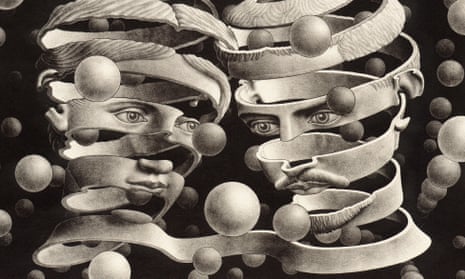Dutch director Robin Lutz has put together a serviceable introduction to the work of legendary Dutch artist and illustrator MC Escher, whose name has become shorthand for a certain kind of brilliant illusion, infinite tessellation and visually perplexing design. He is probably most famous for an image he created, or at any rate popularised: the impossible staircase which ascends endlessly in a closed circle.
Escher’s work was well known in the postwar Netherlands, but it was only after a 1954 article in Time magazine that his reputation took off globally and he achieved colossal cult status in the US counterculture, with bootleg colourised versions of his prints appearing on posters and T-shirts. Escher was bemused to receive a letter from a certain Mr Mick Jagger asking if he would create an album cover – the answer was no, and Escher also rebuked Jagger for presuming to address him by his first name: Maurits.
Escher’s own words from his journals and letters are well spoken by Stephen Fry, though maybe making him seem more forthright and confident than he actually was, and the film very usefully shows how he was a passionate romantic at heart, and how his work was shaped by his initial, abandoned training as an architect, his European travels as a young man, his rapture at the dense architecture of small Italian towns, the intricately recurring tiled motifs of the Alhambra in Spain, and the music of JS Bach.
It is an interesting film, though it perhaps could have discussed if and how he was affected by living in the Nazi-occupied Netherlands (particularly as he had left Italy to avoid Mussolini’s fascism) and addressed more critically and more directly the question of whether Escher is an artist or not. Does he deserve to be considered a great artist? An ancestor of op art and Bridget Riley? Or is there, for all his dazzling technique, something sterile and self-enclosed in Escher’s images? Well, the film proceeds on the undiscussed assumption that he was a great artist. It’s impossible not to be a fan.

Comments (…)
Sign in or create your Guardian account to join the discussion